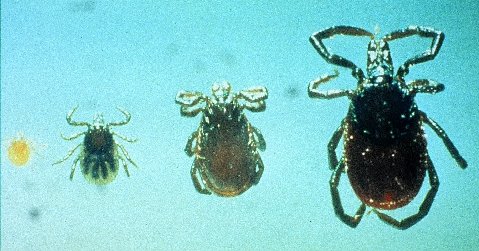
SHARE THIS ARTICLE:
Western Blacklegged Ticks & Pathogens: New Insight

This review provides an overview of the factors that influence the distribution and abundance of the western blacklegged tick (Ixodes pacificus) and the dynamics of tickborne pathogen transmission in the western region of the US. The review sheds light on the the gaps in knowledge and indicates that research is required gain a better understanding of tick species and their pathogens in the western US.
Of note, both tick vectors and the Borrelia spirochetes species on the west coast have a greater diversity compared to the eastern United States. There have been 20 different Ixodes species reported in California alone. In addition to I. pacificus, other endemic species which preferentially feed on rodents include I. spinipalpis, I. angustus, I. neotomae, and I. jellisoni, and I. spinipalpis and I. angustus are known to occasionally parasitize humans.
Several species within the B. burgdorferi s. l. complex, including B. americana, B. bissettiae, B. californensis, and B. lanei have been found in the western US in addition to B. burgdorferi s. s. predominately found in the eastern region of the US.
The full range of I. pacificus is from British Columbia, Canada, to Mexico. The range includes most of the coastal areas of California, Oregon, and Washington, with limited reports from northwestern Utah and Southern Nevada. Most research to date has been conducted in Califorina where I. pacificus is broadly distributed, found in 56 of 58 California counties. Abundance varies greatly and microclimate, including those influenced by wildfires, has been found to be an important influencing factor. Host-seeking behaviors vary based on location and time of the year and seasonal pattern suggests that different stages of I. pacificus are active year-round, which poses a year long threat to human health in this region.





